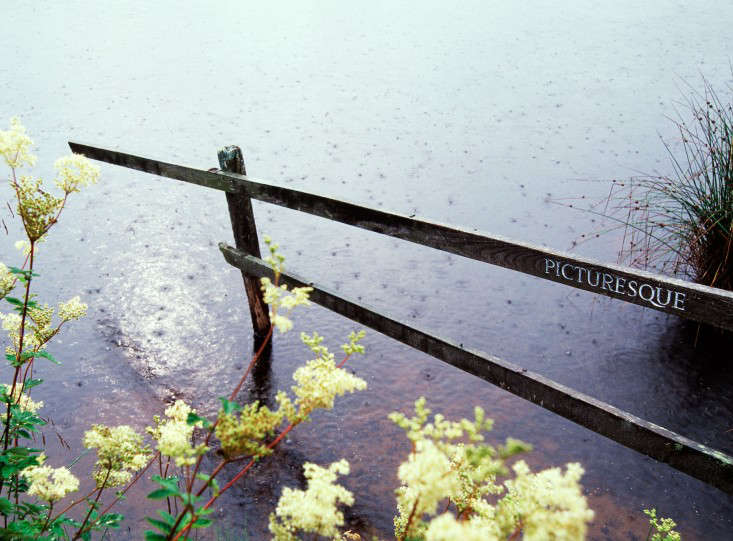The other day, celebrating a rare and much longed for day of warmth and sunshine here in Brooklyn, I treated myself to a trip to the Bronx, to the New York Botanical Garden. While most people go this time of the year for the annual orchid show, my purpose was to catch an exhibit of photographs in the Botanical Garden’s Ross Gallery where the work of noted landscape photographer and journalist Allan Pollok-Morris was on display.
The exhibit is over now, but you can still relish the dramatic images and find inspiration for your own garden by treating yourself to Pollok-Morris’s book: Close: Landscape Design and Land Art in Scotland ($37.92 from Amazon). Expect a surprising guided tour of Scotland led by someone who loves gardens and has a discerning eye for art in harmony with nature. The frontispiece is a map with the locations of all the places Pollok-Morris visited. The chapter titles are their latitudes. As you read, you go north. Don’t expect to discover a distinctive “Scottish” style. The gardens and art here are remarkably diverse. Pollok-Morris says he was guided by instinct and was drawn to those places which have “a sense of something you haven’t experienced before or that leave you with a different sense of place.”
While there is plenty of sunshine in these pictures, more frequently the light is gloomy (the sky a low, roiling gray mass), evidence that the climate in Scotland is harsh and the creators of these gardens are tough, even defiant. It is a feature of this photographer’s work that his pictures seem to capture living moments. Like the gardens themselves, they seem to be in flux, not frozen in time. The labyrinth on the beach, the cairn in a field, the letterbox by a stream; it’s as if we’re out on a hike and we round a new bend where Allan Pollok-Morris points out something unexpected and amazing.
Photographs by Allan Pollok-Morris.

Above: Charles Jencks uses the land as a raw material in his work “Cells of Life” at Jupiter Artland, a sculpture garden on the grounds of Bonnington House in Edinburgh.

Above: The Keyhole driveway at Dunbeath Castle, a project of designer Xa Tollemache. The castle dates from the 1400s and sits high on a cliff in the far North East of Scotland, where winds frequently reach 100 miles per hour.

Above: Naturalistic planting of echinops and helenium reflects the style of head gardener Elliott Forsyth at the Cambo Estate near St Andrews.

Above: A rainy day in Little Sparta, the garden near Edinburgh, designed by the late artist, poet, philosopher, gardener, and landscape designer Ian Hamilton Finlay. Little Sparta was voted the most important work of art in Scotland and served as an inspiration for Close.
For more, see Required Reading: Little Sparta in Words and Pictures.

Above: Grass and granite labyrinth designed by Arabella Lennox-Boyd in front of Maggie’s Cancer Caring Center in Dundee. The building was designed by Frank Gehry and is part of Ninewells Hospital.

Above: Anthony Gormley statue “Firmament” at Jupiter Artland.

Above: Artist Gerald Laing enjoying the water feature of his garden in the Highlands.

Above: Stone cairn in Penpont by sculptor Andy Goldsworthy.
Above: Close: Landscape Design and Land Art in Scotland by Allan Pollok-Morris is $37.92 from Amazon.
For further reading, see The Poet in His Garden Ian Hamilton Finlay in Scotland.
To grow a little bit of Scotland in your own garden, consider the thistle. See 5 Favorites: Garden-Friendly Thistles.














Have a Question or Comment About This Post?
Join the conversation (0)